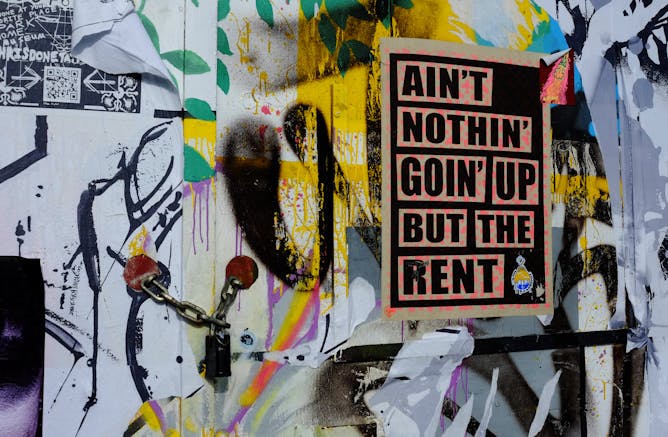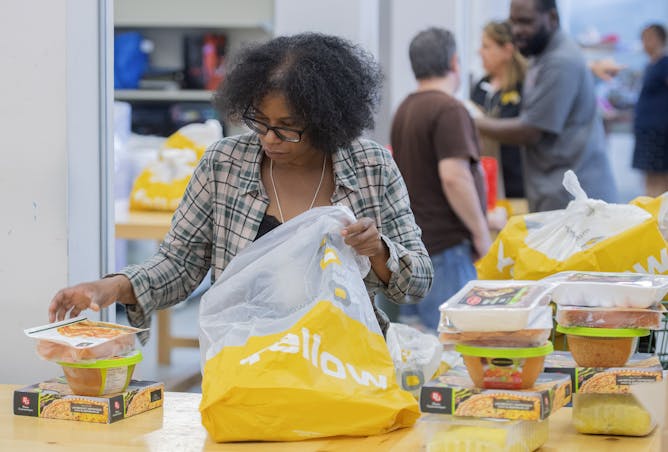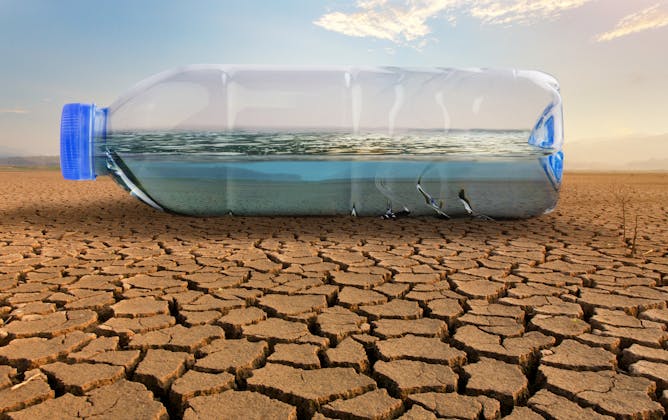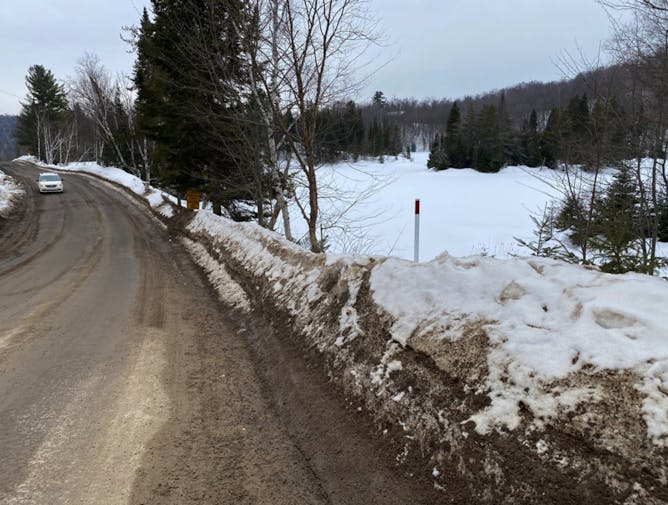|
When we think about gentrification, what often comes to mind are the ways neighbourhoods are physically transformed. Luxury apartment blocks replace single family homes and trendy cafe chains replace independent businesses. But gentrification can also change the demographics of a neighbourhood, pushing out people who have lived there for years and breaking up communities. And racialized communities often face the brunt of those changes.
Today, in The Conversation Canada, Mieko Tarrius from Concordia University highlights the ways gentrification has impacted racialized communities in two cities: Montréal and New York. She writes that gentrification is a multi-faceted process that “denies racialized people cultural ownership over their own spaces.”
Also today:
|

A poster highlighting rising rental costs due to gentrification in Hackney, London. Gentrification often results in the dislocation of marginalized communities who can no longer afford to live in their communities.
(Shutterstock)
Mieko Tarrius, Concordia University
Gentrification is often used to describe the economic impacts of urban development. However, racialized communities in particular disproportionately feel its detrimental impacts.
|

A volunteer bags groceries to hand to people in need at a Sun Youth charity location in Montréal in July 2022.
THE CANADIAN PRESS/Graham Hughes
Geranda Notten, L’Université d’Ottawa/University of Ottawa
Canada’s official poverty measure only focuses on income and ignores other important factors, meaning there are millions of Canadians living in poverty that are ignored by the measure.
|

A pedestrian wearing a mask crosses a street in Calgary in November 2020.
THE CANADIAN PRESS/Jeff McIntosh
Michelle Maroto, University of Alberta; Lisa Young, University of Calgary
Albertans struggled during the COVID-19 pandemic, but the Alberta Viewpoint Survey shows there’s a fragile optimism about the future as a provincial election approaches.
|

Bottled water corporations exploit surface water and aquifers, buy water at a very low cost and sell it for 150 to 1,000 times more than the same unit of municipal tap water.
(Shutterstock)
Zeineb Bouhlel, United Nations University; Vladimir Smakhtin, United Nations University
The bottled water industry can undermine progress of projects aimed at creating safe-water systems for all, by redirecting attention to a less reliable, less affordable option.
|

Roads require de-icing strategies in northern regions, but this practice has negative effects on aquatic biodiversity.
Alison Derry, Université du Québec à Montréal (UQAM); Miguel Cañedo-Argüelles, Universitat de Barcelona; Stephanie J Melles, Toronto Metropolitan University
Although it has been considerably less studied than other environmental problems, salinization presents major challenges for biodiversity in freshwater and coastal areas.
|

Les routes nécessitent des stratégies de déglaçage dans les régions tempérées du nord, mais cette pratique a des effets négatifs sur la biodiversité aquatique.
(Alison Derry)
Alison Derry, Université du Québec à Montréal (UQAM); Miguel Cañedo-Argüelles, Universitat de Barcelona; Stephanie J Melles, Toronto Metropolitan University
Bien qu’elle ait été considérablement moins étudiée que d’autres problèmes environnementaux, la salinisation présente des défis majeurs pour la biodiversité des eaux douces et des zones côtières.
|
Business + Economy
|
-
Jannie Rossouw, University of the Witwatersrand
Confidence in banking is hard-earned and easily shocked. This makes individual banks and the banking sector susceptible to knock-on effects from other institutions.
|
|
Environment + Energy
|
-
Lindsay Hamilton, University of York
Octopuses are enigmatic beings whose experiences of industrial farming are likely to be profound.
|
|
Politics
|
-
Ronald Suny, University of Michigan
The setting was grand, so too was the plan. But behind the peace plan put forward by China and welcomed by Russia, is the question, what do both nations seek?
|
|